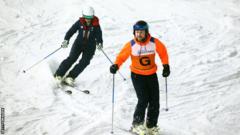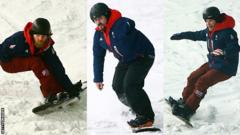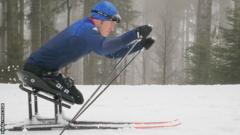Cold temperatures continue in Morzine as spring approaches
Winter shows no sign of letting up!
Featured in:
Rob Wood | Morzine Reporter | Published: 19th March 2018
With the UK currently being battered by the “Beast from the East 2.0” this week looks like being a mainly dry but cold one here. The all-important Jetstream still remains anchored over the Iberian Peninsula, where it has been for the past few weeks, and this will continue with the less than springlike weather that has been predominant of late.
Very often, by mid to late March the Alps are awash with sunshine and diminishing snow cover but that certainly isn’t the case at the moment after fresh fall last week at all elevations. This week may not bring much fresh snow, maybe 20cm in total, but the cold temperatures will certainly keep the already good snow cover in great condition as April fast approaches.
For the early part of the week, low pressure will be in control and winds will be in the main northerly in direction. Towards the middle of the week, barometric pressure should rise with the arrival of an area of high pressure and the second half of the week looks set to be largely sunny but still cold.
Monday
Light overnight snowfall will continue for most of the day but only around 5cm is likely in total. A freeze height of around 1000 metres will ensure snow and not rain. Winds will be steady at around 10kmph from the north. A cold day with resort highs of around -5ºC in the afternoon. The snow should fizzle out by around 21:00.
Tuesday
A mainly cloudy day with a few light snow flurries. Winds will again be from the north at around 10kmph. Another cold day with daytime highs of around -4ºC, which will feel a bit chillier in the north winds.
Wednesday
Any early cloud will soon clear and it should be a nice sunny day, albeit again quite cold for the time of year. Winds will continue in their northerly direction and will have increased to around 15kmph. Afternoon temperatures will top out at around -4ºC and it will again continue to feel cold in the wind chill (-8ºC).
Thursday
The north winds continue and will strengthen overnight to around 25kmph, with stronger gusts possibly leading to some initial higher lift disruption. A largely sunny day with winds thankfully decreasing as the day goes on. Remaining cold with daytime highs of around -5ºC, feeling more like -10ºC in the brisk northerly winds. A very light dusting of snow is possible in the early evening.
Friday
Probably the best day of the week with sunshine all day and lighter winds. Winds will remain northerly in direction but should drop to around 10kmph and therefore no lift disruption should occur today. Another cold day with daytime highs of around -3ºC but the uninterrupted sunshine should make it feel warmer at last.
Saturday
A largely cloudy day looks likely with the possibility of some light snow. Around 15cm is possible in total and is likely to be at its heaviest in the early afternoon. Remaining cold with a freeze height of around 800 metres so any precipitation will fall as snow. Daytime highs of around -4ºC with light and variable winds.
Sunday
A largely cloudy day with maybe some sunny intervals and also some snow flurries, a real mixed bag. Slightly warmer than of late with daytime highs getting up to around 0ºC with light and variable winds at around 5kmph.
This outlook might change as long-term forecasts are never completely reliable. Take a look at our Weather Page for up to date information every day.
&auth=238effab76b22bfd21c85a18e6319b16b82ba9c6)












